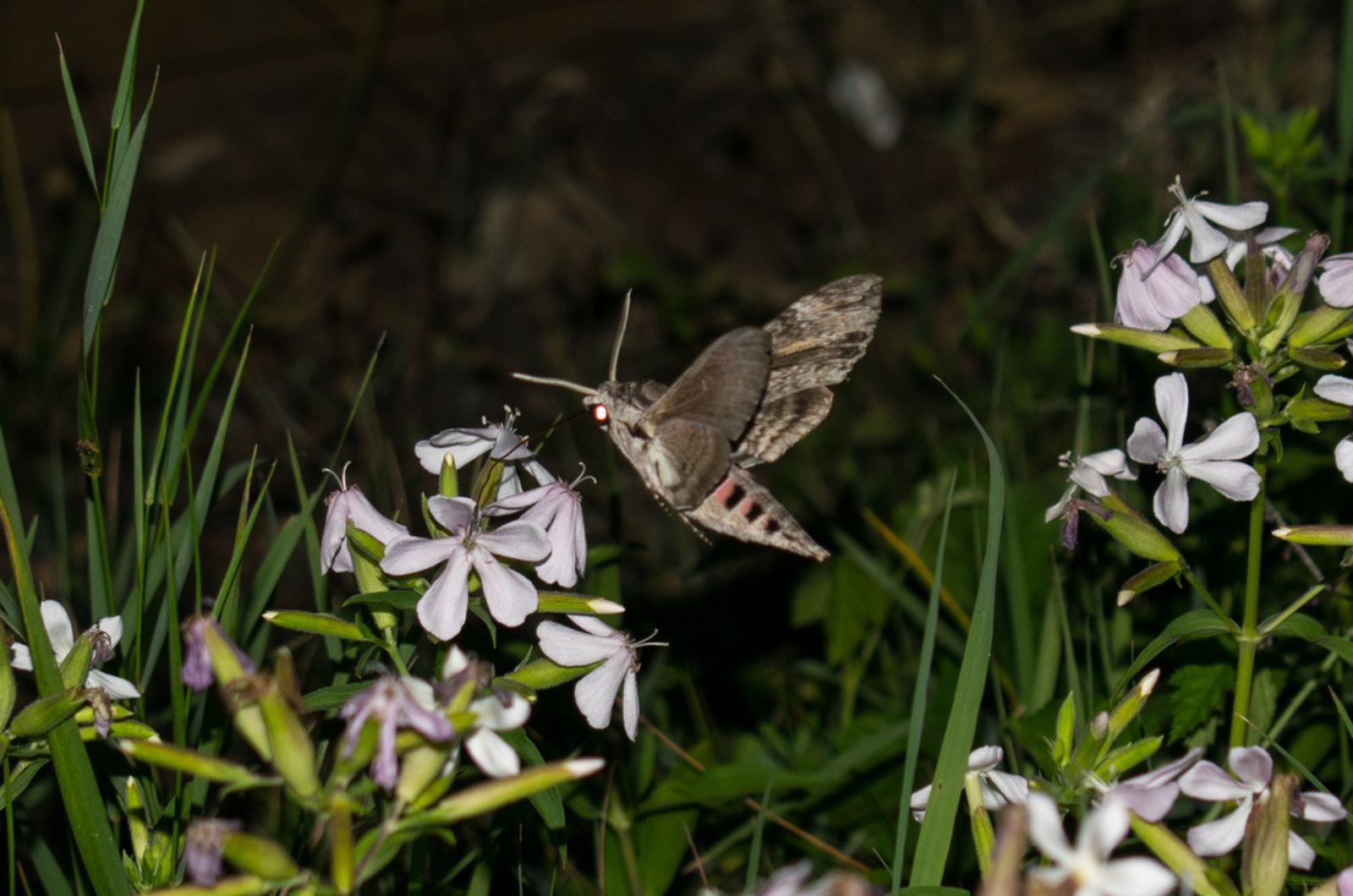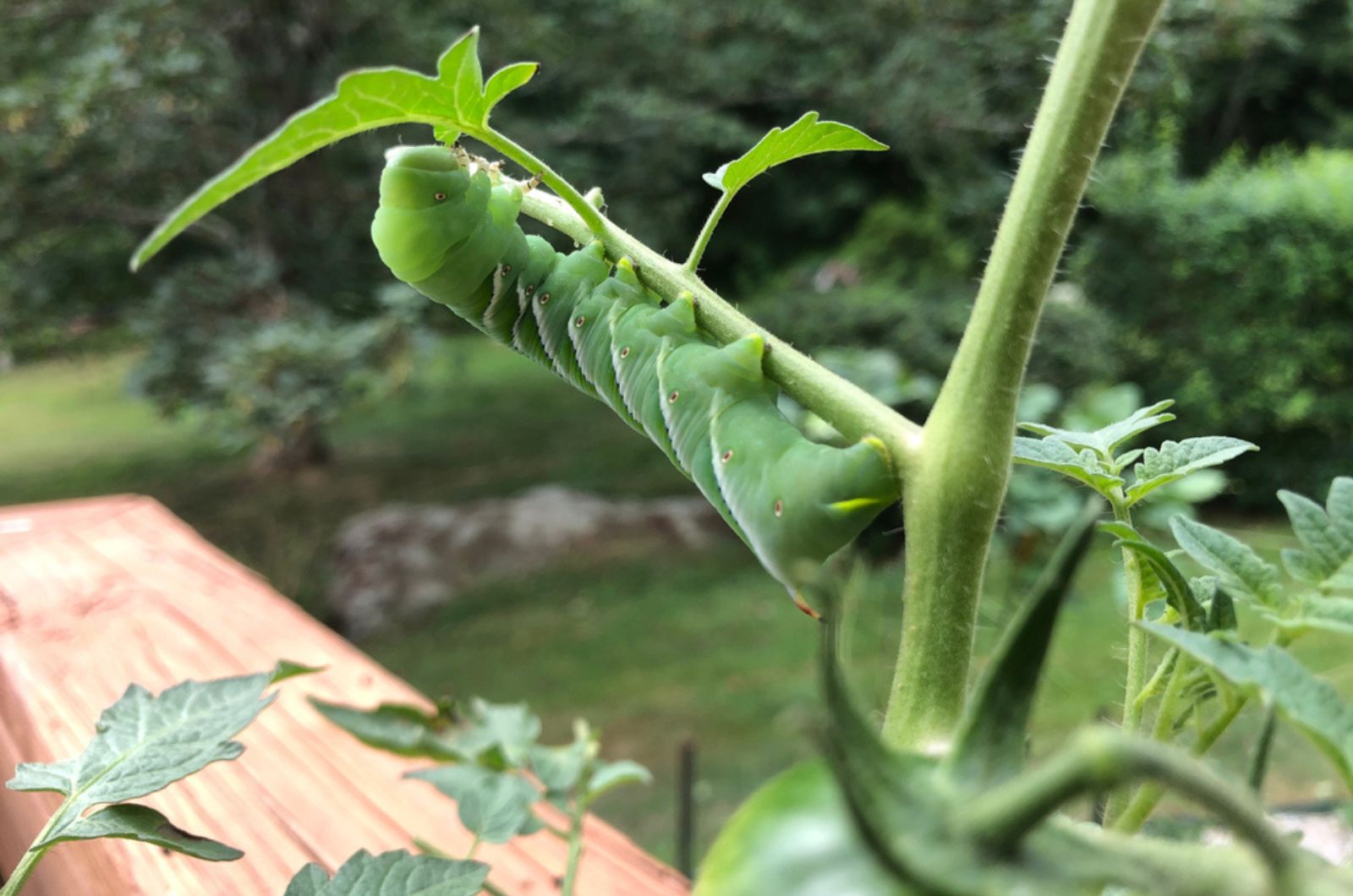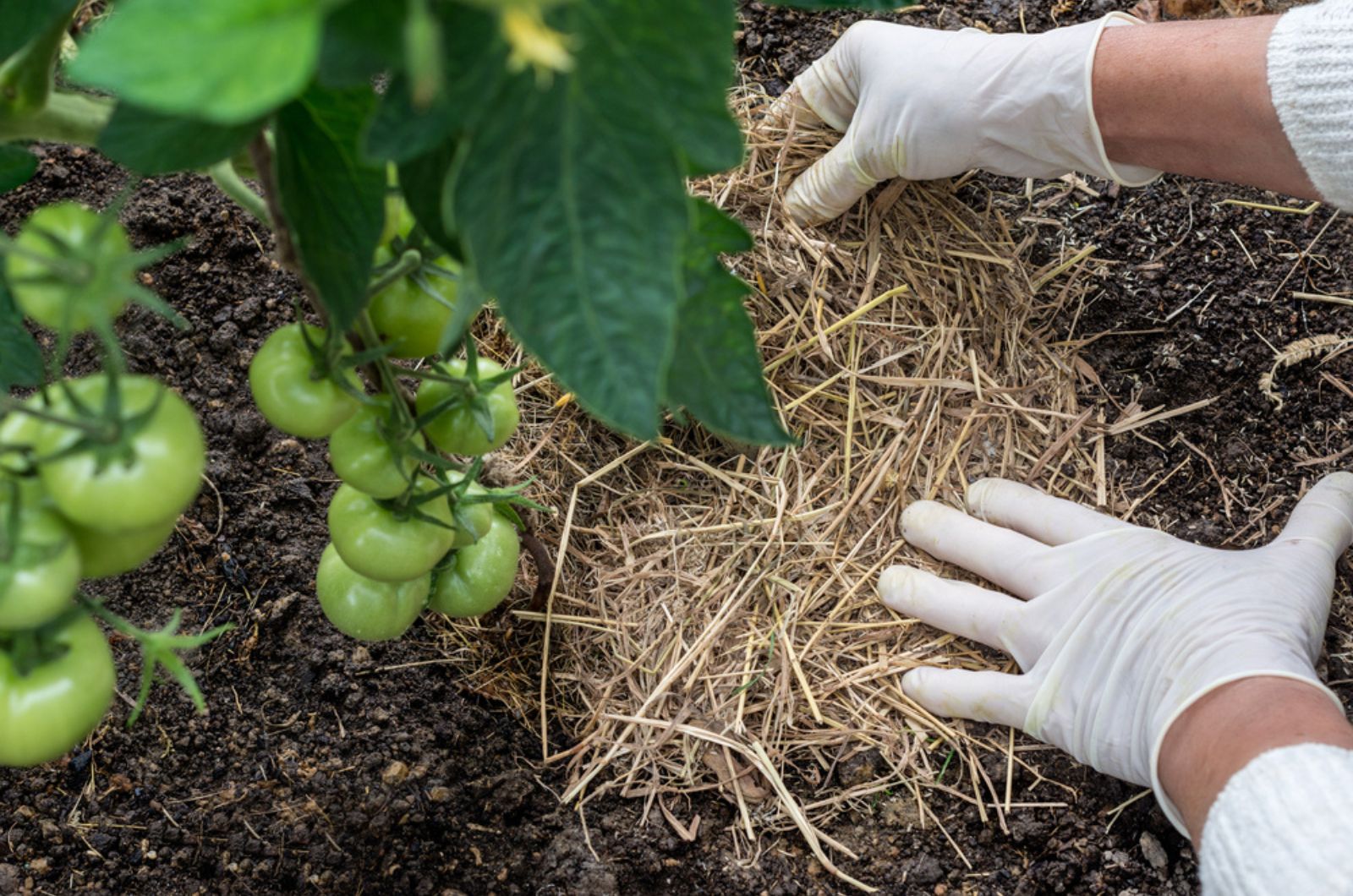How many times have you heard that growing tomatoes is super fun and highly rewarding? That’s true, but we don’t talk enough about things that can go wrong. And I daresay there are quite a few…
Last year, I almost gave up on my tomatoes because one tiny pest decided to make my tomato plants its home.
It took me a while to figure out what species this nuisance belonged to. Well, now I know that it’s a part of the hummingbird moth family. But I also know one more thing…
Every Gardener Should Be Afraid Of Sphinx Moths!
Yes, the name of this particular type of hummingbird moth is the sphinx moth. Nope, it’s not a mythical creature, but rather a pest that can wreak havoc on your tomatoes.
Oh, and it has nothing to do with hummingbirds. I mean, they do hum like these birds and sip nectar, but all the resemblance stops there.
Wait, aren’t moths pollinators that are very beneficial for our plants? Adult moths are pollinators so the problem doesn’t lie there.
They lay their eggs, and babies known as TOMATO HORNWORMS hatch from them.
If you’re a gardener, this should really scare you. These insects enjoy munching on tomato leaves and they’ll quickly find their way onto the fruits.
The more they eat, the bigger they become, and the damage becomes really severe. Yes, that’s exactly what happened to me last year.
So, what should you do?
This Is How You Identify And Deal With These Nuisances
The first step is to identify sphinx moths. Unfortunately, this isn’t as easy as it seems since they are mainly active during the night.
Once you fall asleep, sphinx moths will start feeding on the flowers and lay their eggs. Believe it or not, a single female sphinx moth can lay up to 1,000 eggs. See the problem now?
If you spot tiny, sphere-shaped, bright green eggs on your tomato leaves, tomato hornworms are most likely to blame. They’ll usually appear in late spring.
Sphinx moth eggs are typically around 1¼ inch long, so it’s impossible to notice them without inspecting the plants closely.
Therefore, adding close inspection of tomato leaves to your to-do list in late spring is crucial in dealing with these nuisances.
It typically takes three days for the eggs to hatch, so you don’t really have a lot of time to destroy them.
If you spot the eggs in time, you can simply get rid of them by carefully rubbing the leaves.
On the other hand, if you’re a bit late and eggs hatch, you’ll need to pick them one by one or find some allies.
If you decide on the first method, make sure to drop the picked hornworms in soapy water.
This will be a tough battle, so if you need some allies, here are the things that can help:
1. Bacillus thuringiensis var. kurstaki (Bt): This is a type of natural soil borne bacteria and is typically used in organic pest control.
2. Dish soap solution: Add about 2 tbsp of dish soap to a quart of water, mix well, and spray on the tomato leaves.
3. Capsaicin spray: Take 6-7 dry peppers, crush them, and add to boiling water. Once it cools, pour it into a spray bottle and spray the leaves.
Remember That Prevention Is The Best Medicine!
We must ensure all the ideal conditions for our tomato plants and protect them from common intruders.
When I had an issue with tomato hornworms and was trying to find a solution, I came across several different methods.
You’ll get advice on installing zap lights that will attract moths and zip them with electricity after contact. Do I even need to explain how inhumane this is?
Remember, moths are pollinators and we need them in our gardens. Yes, the larvae are dangerous, so we need to get rid of them only if they invade the tomato leaves.
But destroying adult moths to prevent them from laying eggs is insane.
What you can do is install a protective covering over the tomato plants in late spring. You have plenty of options here.
Tunnels, raw covers, and garden hoops are perfect ways to prevent sphinx moths from laying eggs on your plants.
Another great way (and my favorite) is to add some tomato plant companions. The strong scent of borage and marigolds will keep hornworms at bay!
Finally, you can let other creatures take care of tomato hornworms. For instance, you can plant yarrow to attract wasps. These predators will lay eggs on hornworms and destroy them in no time.
Sphinx moth eggs are definitely something you don’t want on your tomatoes. Regularly inspect your tomato plants, and if you spot the eggs, use our methods to deal with them before they make too much of a mess!




